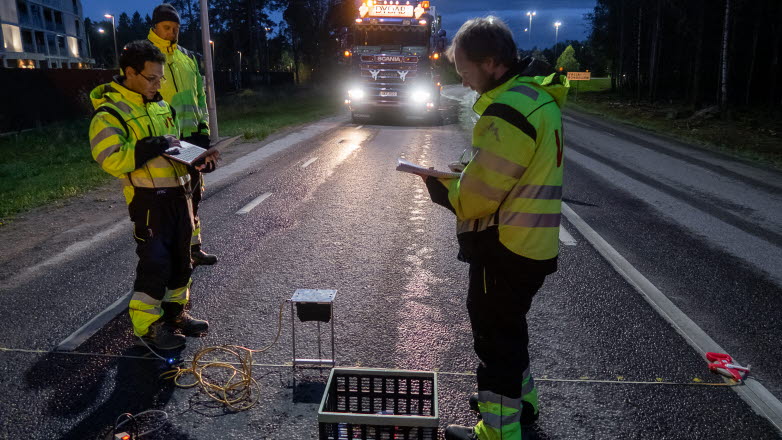Improved air quality – an unexpected effect of noise-reducing road surfaces

The aim of porous road surfaces is primarily to reduce road noise, but research at VTI shows that this type of road surface can also have positive effects on air quality.
It all started with a doctoral project, financed by the Swedish Transport Administration and VTI. Large amounts of data were collected from a section of Industrigatan in Linköping. Measurements of, amongst other things, road noise, air quality and road surface characteristics were taken. One of the doctoral students was focused on particle emissions and the other on road noise and rolling resistance.
The doctoral students, Joacim Lundberg and Tiago Vieira, graduated from their studies, but not all of the data they collected were used.
“We applied for, and were granted, funding to continue to work with the material”, explains Mats Gustafsson, senior researcher at VTI.
Together with his VTI colleague Nina Svensson, along with Joacim Lundberg who is now at Faculty of Engineering Lund University and two other researchers at RISE and Metropolia University of Applied Sciences in Helsinki, they continued with the research. They concentrated on the aspect of air quality. The measurements showed a significantly lower level of particles from the porous road surface compared with measurements from an adjacent road with a non-porous surface. What could this positive effect be due to?
“What was previously believed, and is also true, is that road dust, that contributes to the level of particles, is transported down into the porous material, and is therefore not lifted into the air by traffic. However, it could also be seen that when this type of road surface is wet it retains moisture for longer than non-porous surfaces and this also reduces the lifting of particles into the air. We were unable to determine which of these factors has the greatest positive effect.
“The measurements behind this research are comprehensive. The amount of dust on the road surface has been measured along with levels of particles and nitrogen oxide adjacent to the road sections. The updraft behind a tire while driving, has also been measured with the help of a special Finnish measurement vehicle. As well as this, observations of road moisture have been undertaken. It is unique with measurement data covering so many parts of the system”, says Mats Gustafsson.
The build-up of road dust in the porous cavities of the road surface means that the positive effects on both noise reduction and dust collection will reduce over time. When a road becomes clogged it needs to be cleaned with a special machine or resurfaced.
The research team has recently submitted a manuscript on the subject to a scientific journal. What conclusions can be drawn about the impact of their research?
“This research provides an additional reason for anyone who is keen to construct a road with a porous surface. A reduction in road noise is the primary reason for a porous surface, but you can also achieve better air quality in environments where road dust contributes to high levels of particles in the air.”
There is still unused data about road noise and rolling resistance available from the initial study. Mats Gustafsson hopes that also this material can come to use in future projects.
Text: Catarina Gisby/Redakta
Translation: CBG
Don´t miss out on our news – subscribe now!
Stay informed with the latest research and news from VTI. Sign up for newsletters, sent by e-mail four times a year.
